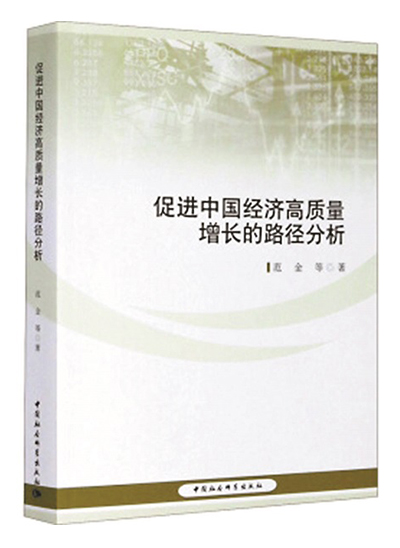Innovation key to high-quality economic growth

A Path Analysis of Promoting China’s High-Quality Economic Growth
A Path Analysis of Promoting China’s High-Quality Economic Growth analyzes and forecasts the development trend of China’s economic growth quality in the new era, from the respective perspective of calculating or measuring gross domestic product (GDP), total factor productivity (TFP), and the value added ratio (VAR).
Written by Fan Jin, a professor from the College of Economics and Management at Nanjing Forestry University, the book gives a theoretical account of the new normal, economic growth quality, the new era, high-quality development, and other core concepts, as well as their mutual logical relationships.
The book concludes that since the beginning of the 12th Five-Year Plan (2011–15), China’s economy has shown the following characteristics: the economic growth rate has slowed down significantly, and the trend of “shifting gears” has taken shape; the proportion of the service industry in GDP has exceeded that of the secondary industry; the contribution rate of the demographic dividend has declined, and the household saving rate has moved into a turning reversion; the leading role of innovation has yet to emerge; economic uncertainties have given rise to the diversification of risks, making the task of achieving high-quality development more arduous.
In contrast to the planned economy period, the TFP growth rate after the reform and opening up has fluctuated in a more stable way, showing the regional characteristics of high rates in the east and low in the west, and displaying the dynamic evolutionary characteristics of low before and high after. The investment-driven feature of China’s economic growth, which once appeared increasingly prominent, has weakened significantly between 2012 and 2018, while the innovation-driven feature has gradually emerged. The disappearance of the demographic dividend has affected the eastern region more obviously. The improvement of technical efficiency and technological progress are the main factors driving TFP growth in the eastern and central regions, while technological progress is the sole impetus driving TFP growth in the western regions.
In the comprehensive and professional planning over the 13th Five-Year Plan (2016–20) period, many provinces, prefectures, and counties took the industrial VAR as one of the important indicators to evaluate, monitor, and forecast the quality of economic growth. In response, the author calls for attention to application conditions. Specifically, we need to measure the threshold upper limit of the VAR that relates to macroeconomic indicators such as the capital depreciation rate, population growth rate, and saving rate, and proceed from the GDP, TFP, and VAR calculation, so as to respectively reflect the level, motivation, and structural evolution trend of China’s economic growth quality.
Li Qun is a research fellow from the Institute of Quantitative and Technological Economics at the Chinese Academy of Social Sciences.
Edited by YANG LANLAN
